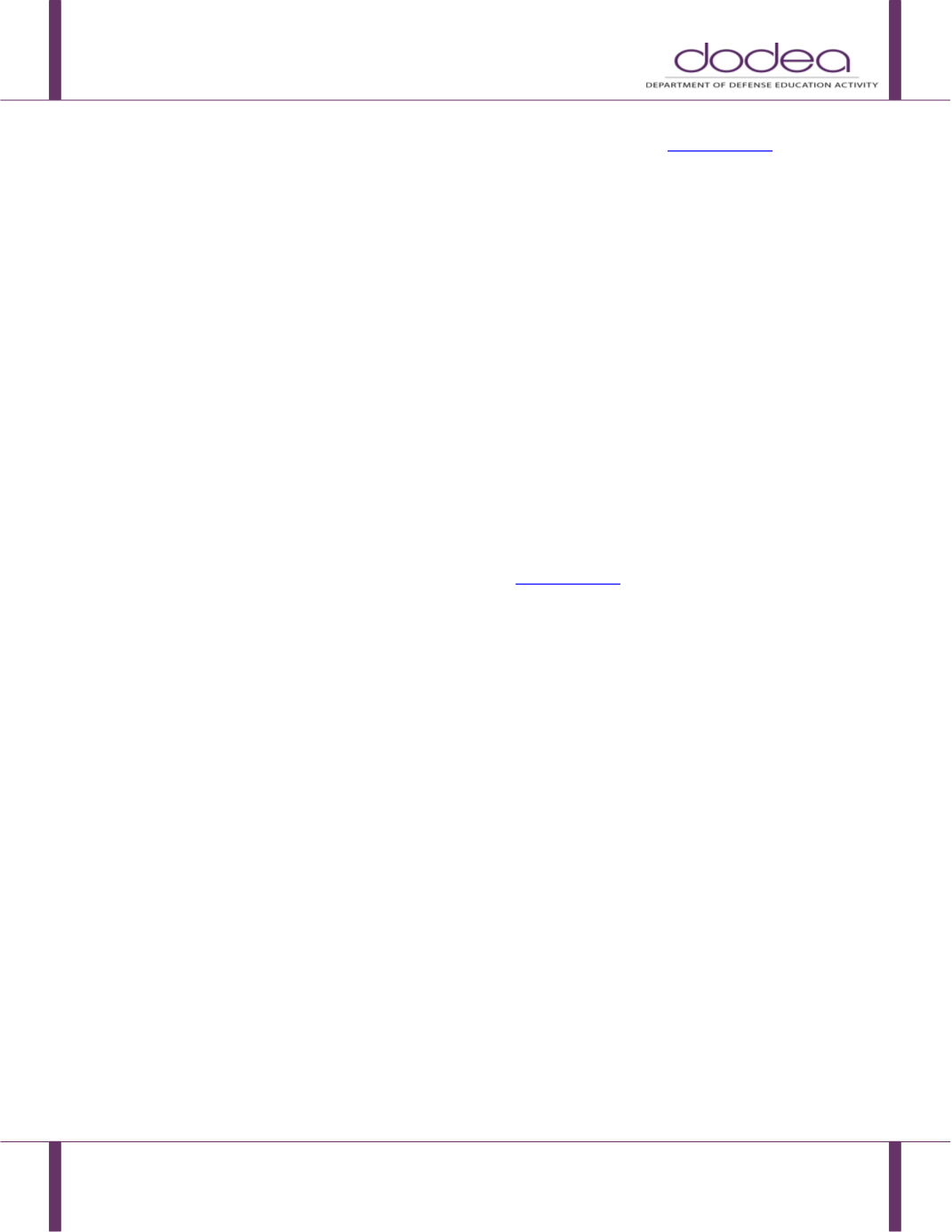

1342.12 Companion
July 12, 2017
Page 146
Legal Definition of Assistive Technology
The Individuals with Disabilities Education Improvement Act (IDEA) of 2004 an
d DoDM 1342.12page 84,
provide a legal definition of AT. The definition reads as follows:
Assistive technology device means any item, piece of equipment, or product system, whether acquired
commercially off the shelf, modified, or customized, that is used to increase, maintain, or improve the
functional capabilities of a student with a disability.
The phrase “
any item
” can and should be interpreted broadly to include any technology. Technology
may include more complex items such as computer-based technology and software to everyday items
such as tennis balls, which can be used to modify everyday items (e.g., pencils) for alternative grasps.
“
Product system
” refers to the idea that an AT solution may often times require multiple technologies
that are working together in order to provide benefit to a student with a disability. All the technologies
must work in concert for the student to benefit from the AT system.
The phrase “
that is used to increase, maintain, or improve the functional capabilities of a student with a
disability
” refers to the reason that the AT tool or system is provided to the student. Functional
capabilities may be defined as those processes that students are expected to perform every day in
school to be successful. These include, but are not limited to, eating, drinking, toileting, communicating,
seeing, hearing, reading, writing, attending, and ambulating around the school environment.
The term [assistive technology] does not include a medical device that is surgically implanted, or the
replacement of such device. (Authority: 20 U.S.C. 1401(1)
; DoDM 1342.12page 84)
Consequently, any AT that is considered for students with disabilities in school settings should not
include items that need to be surgically implanted – that is, those items that would need to be inserted
into the body subcutaneously (below the skin) and would require a medical doctor to perform the
procedure (e.g., cochlear implant).
Continuum of Categories of Assistive Technology
AT is conceptualized on a continuum from Low Tech to High Tech. Low Tech refers to AT tools that are
typically more widely available, lower in cost, and relatively easier to use (e.g., slant boards, tactile
rulers, colored paper, and name stamps). High Tech refers to AT tools that may be more specialized, not
widely available, higher in cost, and more complex to operate and use (e.g., alternative keyboards,
speech recognition software, and electronic eye gaze systems). These tools are identified to meet
specific needs of students with disabilities.
Legal Definition of AT Services
DoDM 1342.12 page 84, provides a definition of AT services:
Any service that directly assists an individual with a disability in the selection, acquisition, or use of
an assistive technology device. The term includes: evaluating the needs of an individual with a
disability, including a functional evaluation in the individual’s customary environment; purchasing,
leasing, or otherwise providing for the acquisition of assistive technology devices by individuals with
disabilities; selecting, designing, fitting, customizing, adapting, applying, maintaining, repairing, or
replacing assistive technology devices; coordinating and using other therapies, interventions, or
services with assistive technology devices, such as those associated with existing educational and
rehabilitative plans and programs; training or technical assistance for an individual with disabilities
or the family of an individual with disabilities; and training or technical assistance for professionals


















